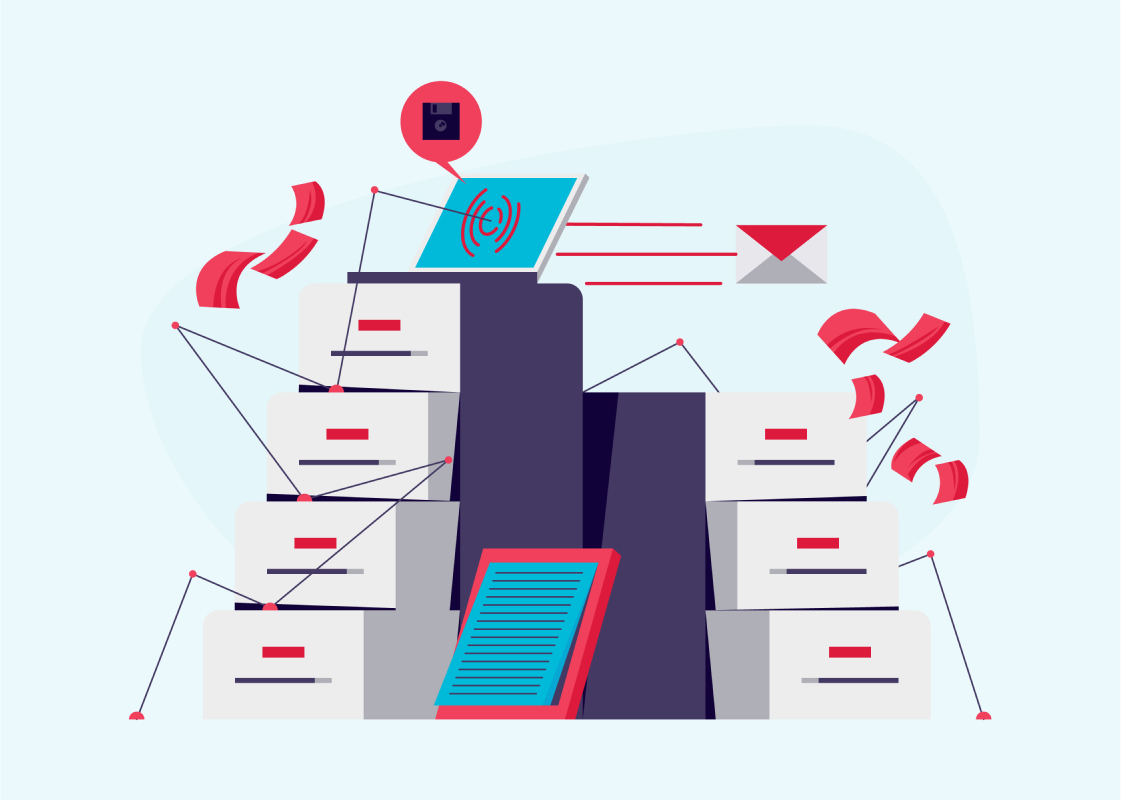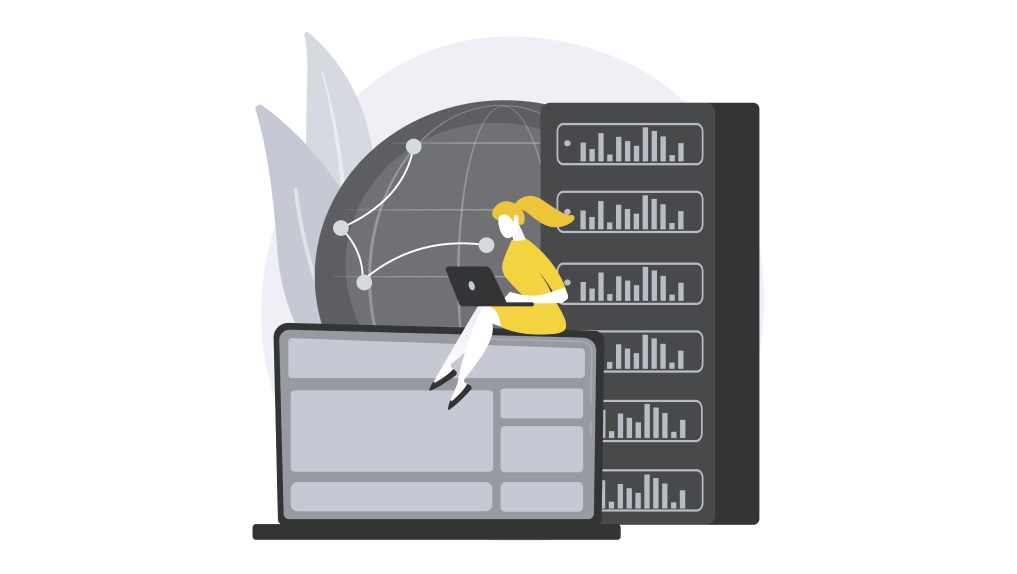
Exploring the Advantages of In-memory Databases
Introduction to In-memory Databases
Definition and Basics of In-memory Databases
Welcome to the fascinating world of in-memory databases! These databases utilize main memory (like RAM) for data storage, unlike traditional databases that use disk drives. This shift to memory-based storage can significantly ramp up data access speeds. Think of in-memory databases as the modern powerhouse, a refreshing shift from the traditional yet slower counterparts.
Evolution of Database Storage: RAM vs Disk
Databases have come a long way. Earlier, disk drives were the norm due to their massive storage capacity and affordable nature. But as the tech landscape advanced and the demand for instantaneous data access surged, the spotlight turned to RAM-based databases. With technology becoming more affordable and innovations making RAM storage larger, the transition became inevitable.
Overview of RAM-based Databases
Dive deeper, and you'll find that RAM-based databases, which store all their data in the system's main memory, are not just a trend. They are a response to the need for better performance, real-time processing capabilities, and efficient scalability in today's digital environment.
Understanding the Core Benefits
Enhanced Database Performance
How In-memory Optimizes Performance
At its essence, the performance optimization of in-memory databases can be attributed to their architecture. Instead of relying on the mechanical movement of a disk's arm to read and write data, as seen in traditional disk-based databases, in-memory systems leverage electronic memory. This shift drastically reduces the time taken for I/O operations. Furthermore, the sequential nature of disk reads becomes irrelevant in a RAM setting, where data access times are uniform, irrespective of the data's location. As businesses pivot toward digital transformations, the absence of these delays can become a competitive advantage, leading to real-time analytics, more dynamic applications, and faster transaction times.
Comparing In-memory vs On-disk Performance Metrics
If we were to map out performance metrics, on-disk databases might appear akin to an old, trusty horse carriage, whereas in-memory databases would be the bullet trains of the data world. While both have their places, the sheer speed difference is palpable. Disk-based systems might handle certain batch processing tasks or archival storage adequately. However, when faced with intensive tasks, especially those needing real-time responses, in-memory databases outshine them in every metric - be it read/write speed, data throughput, or transaction processing times.
Real-time Processing and Data Retrieval Speed
Importance of Speed in Modern Applications
Modern applications, be it for consumers or enterprises, operate in an environment defined by the "need for speed." The next-gen consumer, spoiled by instantaneous responses, expects apps to load in milliseconds, videos to stream without buffering, and transactions to be completed with a single click. These expectations mandate a backend that can keep up, driving the demand for faster databases. The efficacy of applications in sectors like finance, online gaming, or even social media is often decided by the fraction of a second it takes for them to respond.
Real-time Processing Capabilities
In-memory databases truly shine in environments demanding real-time data processing. Think of financial trading platforms where split-second decisions can mean millions in gains or losses, or think of e-commerce platforms that need to adjust prices, stock levels, and recommendations on the fly. The ability to process and act on data as soon as it enters the system is a hallmark of in-memory databases, transforming industries and setting new benchmarks.
Latency Reduction: Making Data Access Instantaneous
With in-memory databases, we're not just talking about faster data access; we're discussing near-instantaneous responses. Imagine an online game where every millisecond counts, or a video conference platform hosting thousands of simultaneous global users. In these scenarios, the elimination of latency doesn't just improve user experience; it defines it. Latency isn't just about delays; it's about perceived application performance, user satisfaction, and ultimately, the success or failure of digital ventures.
Scalability and Growth Potential in Databases
Adapting to Expanding Data Needs
As businesses grow, their data infrastructure must grow with them. It's not just about storing more data; it's about ensuring that as the data volume increases, the speed and performance remain consistent. In-memory databases cater to this need beautifully. With modular scalability, businesses can add more RAM to their existing infrastructure, ensuring that even with more data, the blazing-fast access times remain constant.
How In-memory Databases Scale Efficiently
Scaling in-memory databases is not just about adding more memory. It's a symphony of efficient memory management, data compression techniques, and distributed system architectures. These databases are designed to handle vast data sets, often spanning multiple terabytes. And as they scale, advanced caching techniques and optimized query processes ensure that businesses don't experience a degradation in performance.

Advantages of RAM-based Storage for Databases
Benefits of RAM Storage
Speed and Efficiency Gains
Traditional disk-based databases rely on mechanical parts, resulting in inevitable wear and tear over time. RAM-based storage, on the other hand, offers electronic data access which eliminates this mechanical lag. Without any moving parts, the journey from data request to data retrieval is incredibly swift. The speed translates directly into efficiency gains where operations that took minutes now take mere seconds, giving businesses a distinct edge.
Reduced Wear and Tear Compared to Physical Drives
Hard drives, with their spinning disks, face wear and tear, which can lead to eventual failures. RAM-based storage systems bypass this pitfall, offering greater longevity and reduced maintenance concerns. The lack of mechanical movement means that RAM-based databases are less prone to physical malfunctions. This translates to fewer disruptions, lower maintenance costs, and enhanced database reliability.
Energy Efficiency and Cost Savings
RAM's electronic nature means it consumes significantly less power than the mechanical operations of hard drives. This efficiency translates into lower electricity bills and a smaller carbon footprint for businesses. Over time, as the data scales, the cost savings from reduced energy consumption can be substantial, making RAM-based storage not just a performance choice, but an environmentally-conscious and economical one as well.
Reducing Latency with In-memory Systems
The Role of RAM in Minimizing Delays
When we discuss latency, we're not merely looking at speed but the predictability of that speed. With RAM, access times are consistent, irrespective of the data's location. This uniformity ensures that applications can rely on consistent, low-latency data access, crucial for services like streaming, online gaming, or any application where the user expects real-time feedback.
Improving User Experience Through Speed
Speed doesn't just mean better application performance; it's intrinsically tied to user experience. Whether it's an e-commerce site where the cart loads instantly, a financial dashboard that updates in real-time, or a healthcare portal providing immediate patient reports – speed dictates user satisfaction. And with in-memory systems, this enhanced user experience becomes the norm, not the exception.
In-memory vs On-disk Databases: A Comparative Analysis
Performance Metrics Comparison
Beyond just speed, the performance matrix of in-memory databases includes factors like query optimization, transactional integrity, and concurrency control. When placed head-to-head against on-disk databases, in-memory systems consistently outperform in each of these areas, leading to smoother, more responsive applications.
Suitability for Different Application Needs
While in-memory databases shine for real-time applications, on-disk databases might be more suitable for long-term archival or scenarios where data persistence is paramount. The choice depends on the application's nature, the volume of data, and the desired performance levels.
Cost and Maintenance Considerations
Though initial investments in in-memory databases might be higher than traditional systems, the reduced maintenance costs, combined with enhanced performance, can often justify the cost. The Total Cost of Ownership (TCO) must be analyzed, considering both immediate and long-term benefits.
Real-world Applications and Case Studies
Industries Benefiting from In-memory Databases
E-commerce and Retail
For online stores, every second a user waits can translate to lost sales. In-memory databases ensure that product listings, cart updates, and checkouts happen in real-time. Retail giants like Amazon and Alibaba rely on such databases for real-time stock updates, personalized recommendations, and flash sales events.
Finance and Real-time Analytics
Financial institutions require rapid data access for trading, fraud detection, and customer services. In-memory databases offer the milliseconds-level performance needed for real-time stock trading platforms or instantaneous credit card fraud alerts.
Healthcare and Instant Patient Data Access
Quick access to patient records can be the difference between life and death. Hospitals and clinics leveraging in-memory databases can instantly retrieve patient histories, diagnostic reports, and treatment plans, streamlining patient care and potentially saving lives.
Success Stories: Companies Leveraging In-memory Databases
Companies like SAP, with its HANA platform, and Oracle with its Exadata systems, have transformed enterprises by offering in-memory solutions. Their success stories include helping businesses analyze massive datasets in real-time, optimizing supply chains, and predicting market trends with unprecedented accuracy.
Future Predictions: The Growing Role of In-memory Systems
The demand for instantaneous data is only set to grow. As IoT devices proliferate and businesses become more data-centric, the role of in-memory databases will expand. We can anticipate more innovations in compression algorithms, even faster access times, and hybrid systems that combine the best of in-memory and on-disk databases.

Conclusion and Takeaways
Summarizing the Advantages of In-memory Databases
In-memory databases have changed the game in the realm of data processing and storage. The significant reduction in latency, the promise of real-time data processing, and the efficiency that RAM-based storage brings are all undeniable advantages. Businesses across various sectors, from e-commerce to healthcare, have realized the value of these databases in today's fast-paced digital era. The speed and efficiency they provide are not just about improved database performance but about reshaping user experiences, streamlining operations, and driving business growth.
The Road Ahead: Potential Developments and Innovations
While we have seen rapid advancements in the in-memory database domain, the road ahead is even more promising. As more businesses recognize the advantages, there's increased R&D investment in this space. We might soon see innovations like hybrid databases that merge the best of both in-memory and on-disk worlds. Additionally, as data volumes grow exponentially with the proliferation of IoT devices and smart technologies, the demand for scalable, efficient in-memory databases will only intensify. For businesses and technologists, it's essential to stay abreast of these developments, as in-memory databases could very well define the next era of technological advancement.
References
- Plattner, H., & Zeier, A. (2011). In-Memory Data Management: Technology and Applications. Springer Science & Business Media.
- Garcia-Molina, H., Ullman, J.D., & Widom, J. (2009). Database Systems: The Complete Book. Prentice Hall Press.
- Stonebraker, M., & Çetintemel, U. (2005). "One Size Fits All": An Idea Whose Time Has Come and Gone. International Conference on Data Engineering (ICDE).
 Mark Petrenko
Mark Petrenko 
